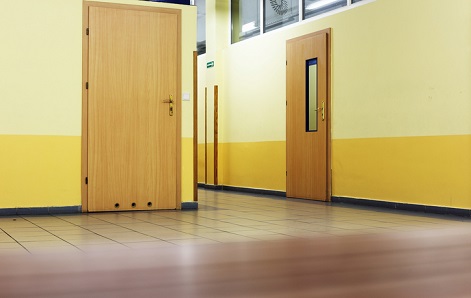
Reports show that more than 650,000 students will flood into Australian classrooms over the next decade, requiring 400-750 schools at a cost of $11bn to state governments.
In Victoria, as many as 200 new schools are projected to be needed in this timeframe, but some say that despite the challenges involved, the new schools present an opportunity to deliver buildings that support the way education works in the 21st century.
Along with his research team, Dr Benjamin Cleveland, a senior lecturer at the University of Melbourne's Faculty of Architecture, Building and Planning, identified four key drivers for improved school design and innovation: new curricula; inclusive education design; turning schools into community hubs; and creating more outdoor learning spaces.
Australia ‘far ahead of the world’
While countries such as Finland, Norway and Sweden have long embedded these into their education systems, Cleveland says Australia is “far ahead of the world” in terms of implementing an academic perspective into the design of its learning environments.
“In particular, we are doing a great job of supporting teachers and students in using the learning environment as a pedagogical tool,” Cleveland told The Educator.
“The stand-out state in this regard is Victoria, where the state government has provided funding the research into this area, and its implementation.”
Cleveland said that with Victoria already recognised internationally as a school system that is leading design innovation, he also expects recent policy changes and subsequent built outcomes to influence the design of schools throughout Australia and around the world.
“The thing that’s had the biggest impact in a direct sense is the School Facility Area Schedules and Design framework. We reviewed this and proposed a number of reasons why the past standards should be changed, as well as what the new standards should be,” Cleveland said.
School design can boost student outcomes
In June, the Designing and Implementing Innovative Learning Spaces conference took place in Sydney, featuring interactive workshops on how to co-design spaces and engage teachers in collaborative practices.
Present at the conference was David Tordoff, the lead architect and Sydney Studio Head at leading architecture firm Hayball. Tordoff says research has shown that school design can play an important role in student well-being and academic outcomes.
“There are a range of schools already implementing prototyping as a first step towards a changing pedagogy, as it enables them to test and refine different spaces with students before committing to anything,” Tordoff told The Educator.
Hayball is a linkage partner of the LEaRN (University of Melbourne) ARC-funded ILETC Innovative Learning Environments and Teacher Change research project.
Tordoff said this is one of the first bodies of research that aims to demonstrate the impact on teaching and learning environments, as well as student learning outcomes.
“Teachers believe success in student learning is often constrained by the physical space, and therefore conversely the physical space can be used to enable creativity, critical thinking, character and collaboration or ‘deep learning’.”
The pivotal role of principals
For principals, Cleveland said it is important that they exercise local leadership in utilising local environments and leading design processes during the creation of new leaning environments.
“This is increasingly important given the growing number of new schools, planned refurbishments and student enrolments. As school leaders, principals are pivotal to all of this,” he said.
However, Cleveland said the main challenge for school leaders is not so much in designing new learning environments but shaping the thinking of staff in the context of how these spaces can be used for collaborative and innovative practices.
“I think the biggest focus for principals in this regard should be around how they can build collaborative teacher teams in these environments,” he said.


